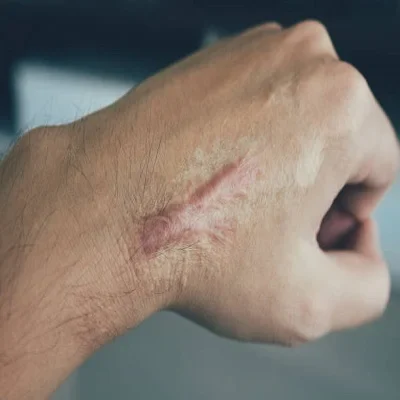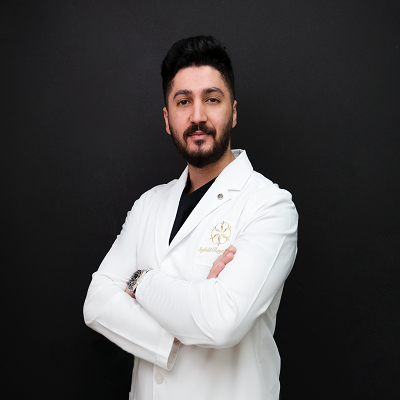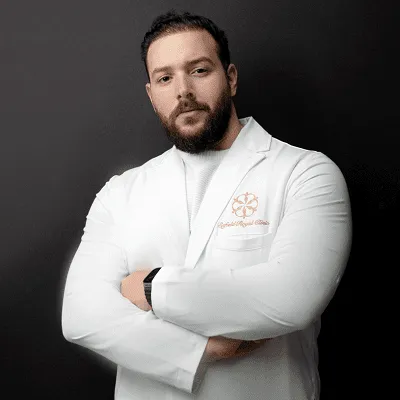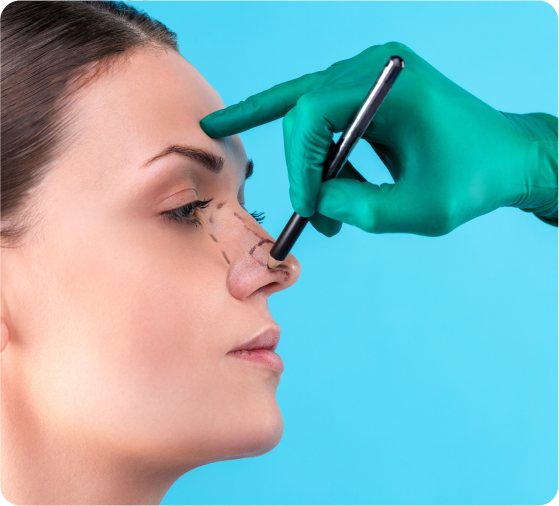Have you been facing increased frustration due to unwanted scars on your skin? Individuals usually consider them an irreversible mark they must live with for the rest of their lives. These Hypertrophic scars can easily make you feel insecure about your skin and may cause discomfort, itching, and emotional distress. A comprehensive guide to treating hypertrophic scars provides individuals with clarity on choosing the right treatment for their condition, minimizing scar visibitlty, improving skin texture, and restoring confidence.
Hypertrophic Scar | What Are They & How Do They Look Alike
Hypertrophic scars are raised, thick, sometimes painful, and develop within the boundaries of the original wound. They often appear red, dense, and firm, and may cause itching, tenderness, or discomfort. While these scars are not harmful, they can hinder your beauty and affect your confidence. These raised scars typically develop one to two months after the injury, and primarily appear on the shoulders, upper arms, elbows, chest, and other joints.
A Comprehensive Guide to Treating Hypertrophic Scars
A comprehensive guide for hypertrophic scars, ranging from causes to advanced medical procedures. With the right approach, raised scars can often be softened, flattened, and become less visible over time.
How Do Hypertrophic Scars Develop
Hypertrophic scars often form during the wound healing process. When the body produces excess collagen to close and repair the wound, this excess collagen causes the scar to become raised, thick, and firm. Key reasons to develop hypertrophic scars:
- Excess collagen production
- Chest, shoulders, and joints are more likely to develop thick scars
- Deep cuts, burns, surgeries, or surgical incisions often trigger stronger scar tissue formation.
- Delayed healing or infection provokes scar tissue to build up more aggressively.
- Genetically more prone to hypertrophic scarring.
Differentiation from Keloids
A scar reduction specialist identifies hypertrophic scars by examining their shape and growth patterns. As mentioned above, unlike keloid scars, hypertrophic scars stay confined to the inside of the wound area.
Non-Surgical Scar Removal Treatments
Different non-surgical techniques are used to remove unwanted hypertrophic scars, and they are as follows:
- Silicone Sheets and Gel:
They used to help flatten and soften the scars.
- Pressure Therapy:
It is often used after burns to prevent scar thickening.
- Corticosteroid Injections and Creams:
It is applied to reduce inflammation and thickness.
Advanced Surgical Scar Treatments
Several advanced treatments are used to reduce the visibility of raised, thick scars. Including:
It smoothens the texture and reduces the redness of the scars.
- Cryotherapy:
It is used to freeze and then reduce scar tissue.
It helps to remove the thick tissue of the scars and re-close the wound.
- Radiation Therapy:
It is used in rare cases, especially when the scars are more stubborn.
Supportive Care
You may need to moisturize and massage the scar properly, and protecting it from sun exposure can improve the appearance and reduce its occurrence.
Prevention of Hypertrophic Scars
Proper wound care, timely treatment of infections, and using the silicone dressing early in the healing process can help you prevent the risk of developing thick scars.
Contact Us for Hypertrophic Scar Treatment in Dubai | Flatten the Raised, Reveal the Real
Are you being self-conscious about thick, raised scars? These scares just won’t fade, no matter what you try, and affect both your appearance and confidence. Don’t let these hypertrophic scars hold you back. Book your consultation immediately with Tajmeels Clinic, and take the first step with A Comprehensive Guide to Treating Hypertrophic Scars toward smoother, healthier skin.
 العربية
العربية




















